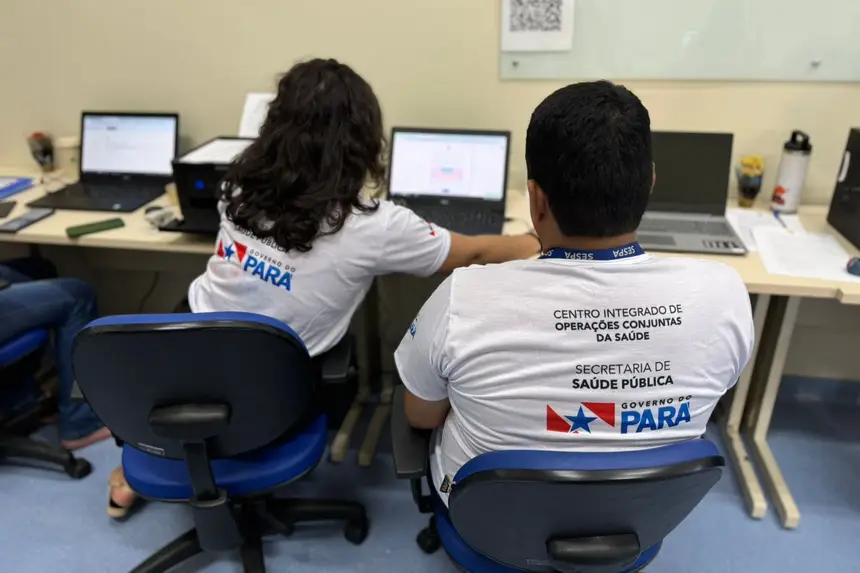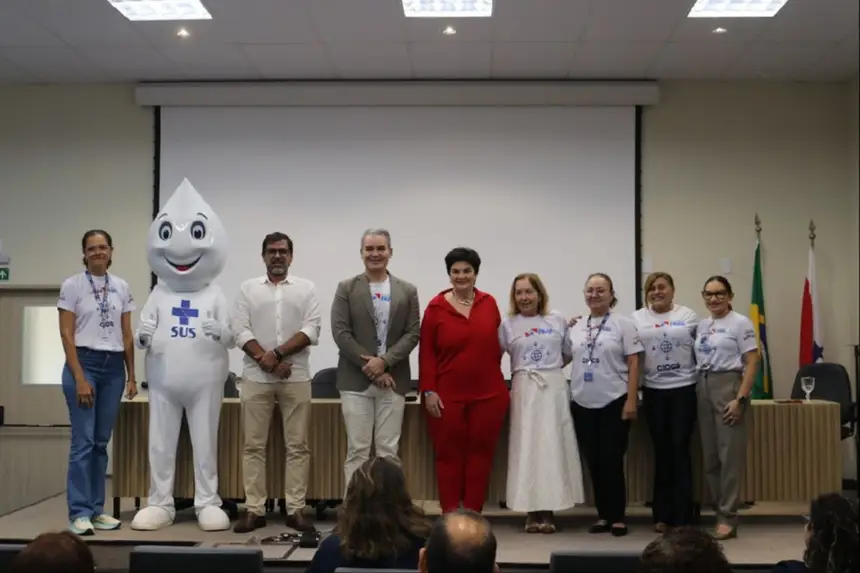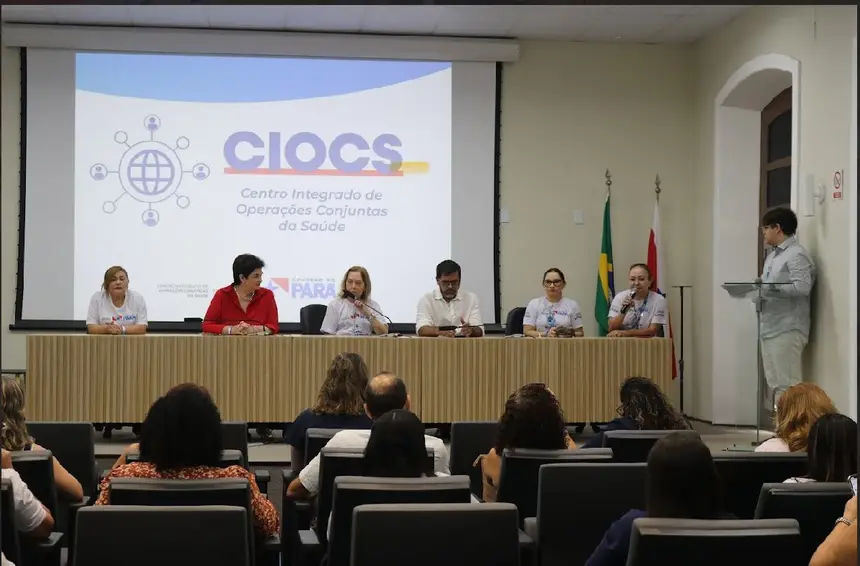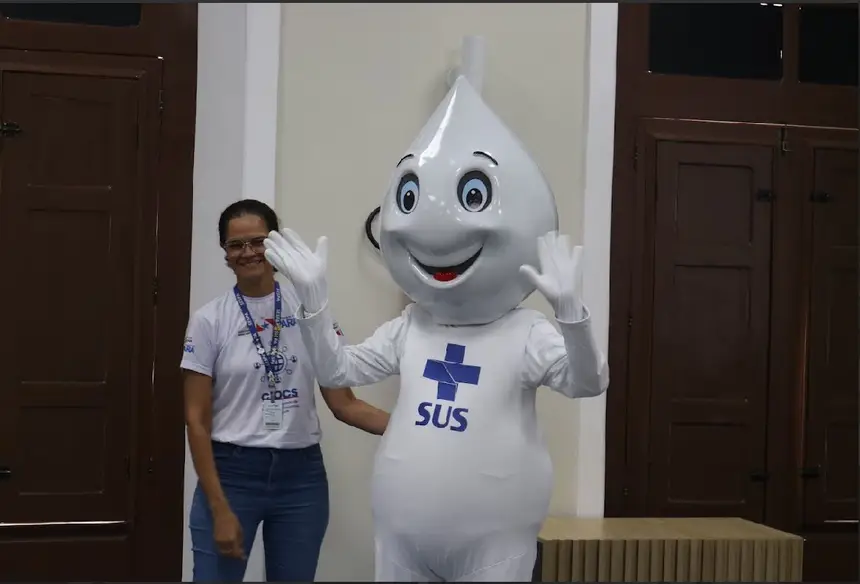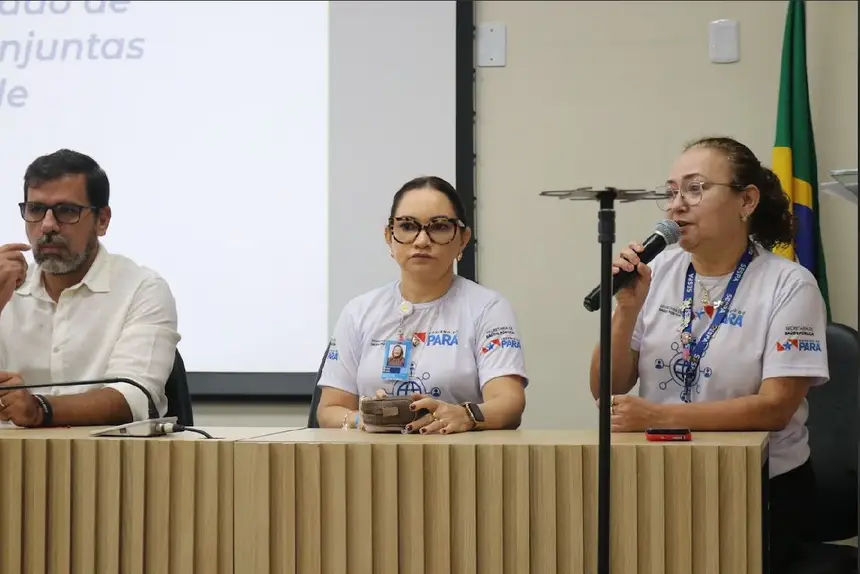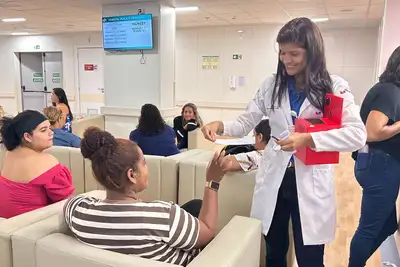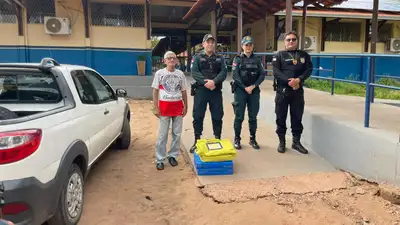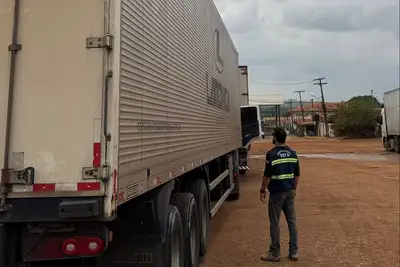Government of Pará activates Integrated Health Operations Center for the Círio de Nazaré 2025
Installed structure at Santa Casa ensures real-time monitoring and immediate response during the largest Catholic procession in the world
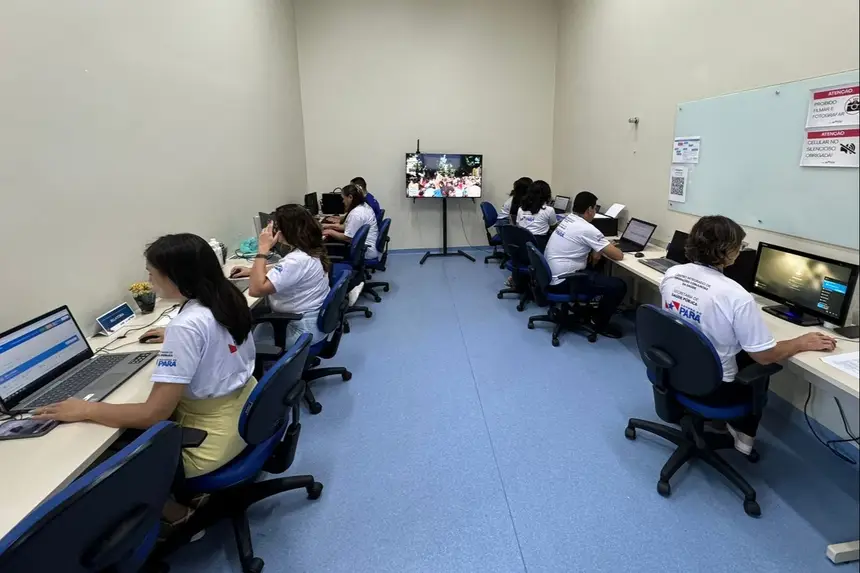
The Government of Pará, through the State Department of Public Health (Sespa), in partnership with the Municipal Health Department (Sesma), activated this Friday (10) the Integrated Joint Health Operations Center (CIOCS) for the Círio de Nazaré 2025, marking the beginning of health monitoring operations aimed at the largest Catholic procession in the world and the largest religious festival in Brazil.
The structure was installed at the Santa Casa de Misericórdia do Pará Foundation, where the official opening of activities also took place, with the presence of the state health secretary, Ivete Vaz, and the deputy secretaries Edney Pereira and Heloísa Guimarães, who gathered the technical team in the auditorium to relay command instructions and the operational plan for the days of celebration. Also present were the municipal health secretary, Rômulo Nina, and the director of Planning, Budget, and Management of Santa Casa, Walda Walente.
The CIOCS will remain active until October 13, gathering about 15 professionals per day among technicians from the Strategic Information Center for Health Surveillance (CIEVS Pará), technical areas of the state and municipal health departments, in addition to the participation of other institutions. The center was designed to manage information in real-time, analyze epidemiological data, and coordinate rapid responses to public health emergencies, with the aim of ensuring safety, surveillance, and agility in prevention and assistance actions during the Trasladação and Círio processions.
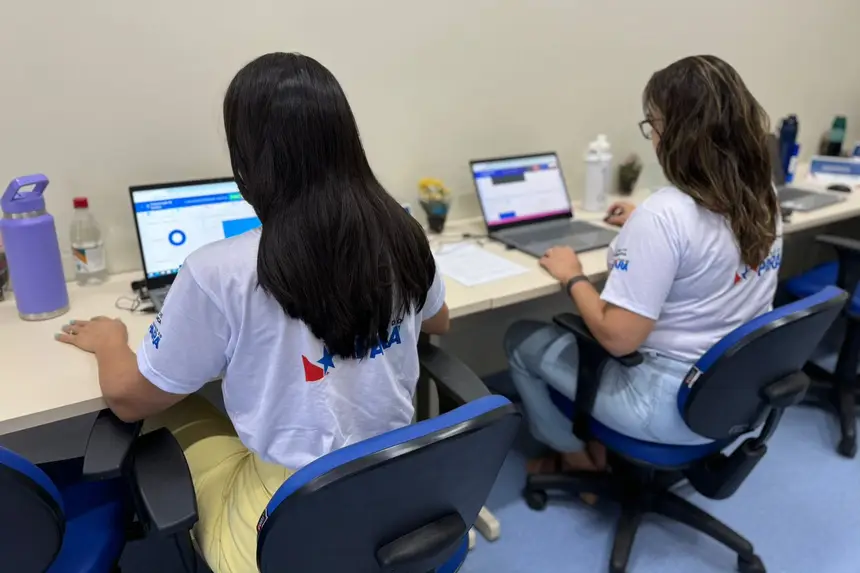
The physical structure includes a monitoring room equipped with cutting-edge technology, a command and strategic coordination room, space for the rapid response team, and a resting area for professionals. During the processions, the CIOCS will monitor the movement of the faithful and the flow of medical care provided at accredited hospitals and care posts set up along the routes, which have multidisciplinary teams and ambulances positioned at strategic points.
“The CIOCS is an essential tool to ensure that public health actions occur in a coordinated and safe manner during mass events like the Círio. We will have teams prepared to identify risks to public health and respond promptly to any situation, ensuring that the festival proceeds smoothly for both the faithful and the health professionals involved,” highlighted Veronilce Borges da Silva, coordinator of CIEVS Pará.
The State Secretary of Public Health, Ivete Gadelha Vaz, emphasized the strategic role of the CIOCS as a legacy for the surveillance structure of Pará. “The Círio is an event of international dimension and requires robust public health planning. This integrated operation reinforces Pará's capacity to act preventively and in a coordinated manner. In addition to protecting the millions of faithful who participate in the festival, the CIOCS also serves as a major preparation exercise for other mass events, such as COP 30,” she stated.
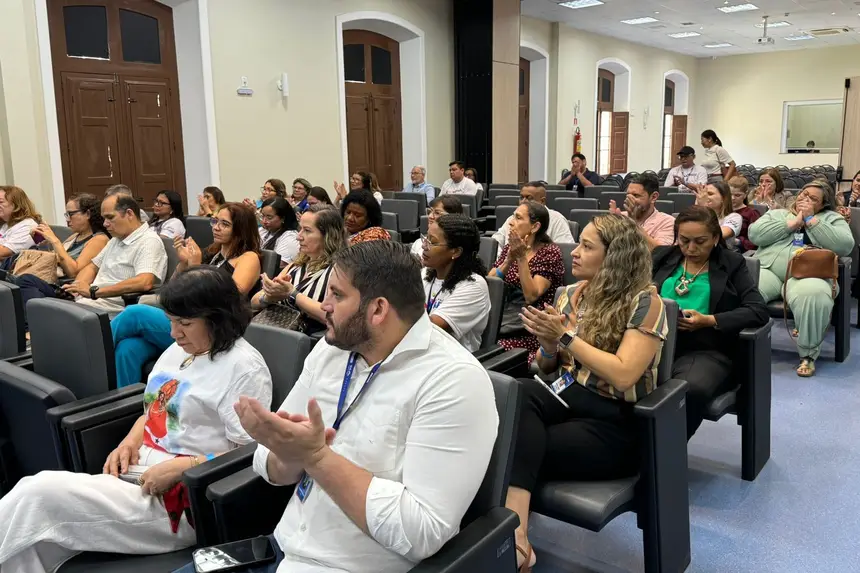
Logistical challenge - The Círio de Nazaré is recognized as the largest Catholic procession in the world, gathering around 2.3 million people in 2024, according to the Festival Directorate. The celebration, which mobilizes the entire capital of Pará, represents not only a religious event but also a logistical and sanitary challenge that requires meticulous planning and integrated response from health authorities.
Mass events, such as the Círio, are defined by their large concentration of people and the need for coordinated action from the three spheres of SUS management: municipal, state, and federal, as established by Ministry of Health Ordinance No. 1,139/2013. The document guides the actions of surveillance, prevention, and response to public health risks during large events.
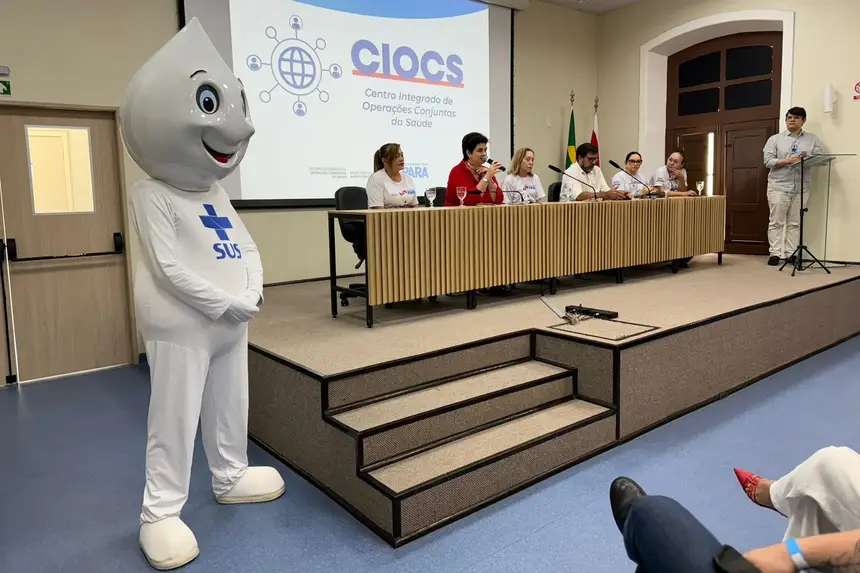
Santa Casa - The choice of Santa Casa de Misericórdia as the headquarters of the CIOCS is due to its robust physical structure, strategic location, and capacity for technical and logistical support, allowing for a more agile and efficient response in case of any incidents. The installation of the center in the institution reinforces the integration between hospital networks and surveillance actions, consolidating Santa Casa as a reference point for rapid response to emergencies during the Círio.
“We are combining technology, planning, and institutional integration to protect the health of the people of Pará. The CIOCS represents the commitment of the Government of Pará to ensure a safe, humane Círio with a health network ready for any situation,” concluded Ivete Vaz.


